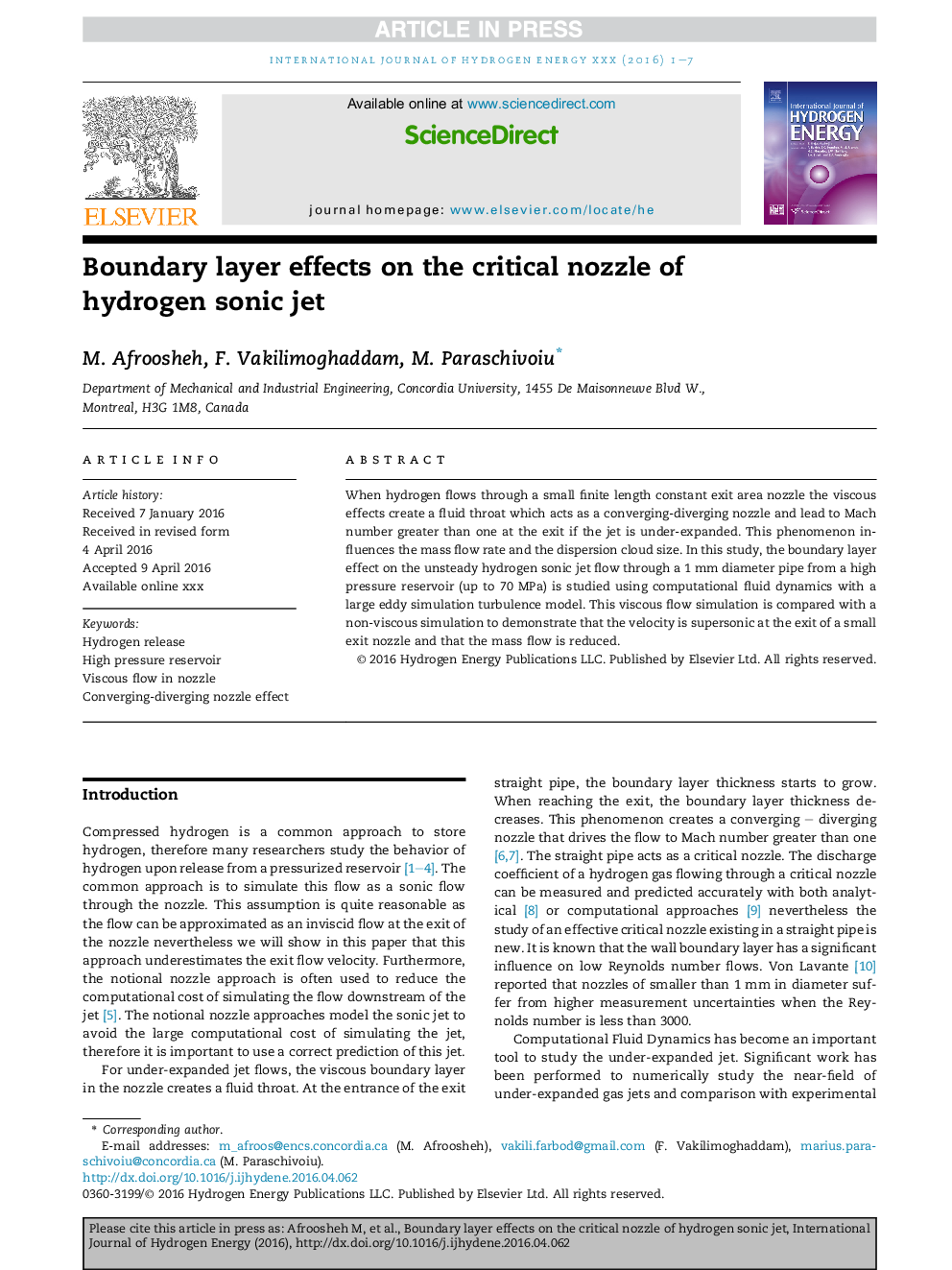| Article ID | Journal | Published Year | Pages | File Type |
|---|---|---|---|---|
| 5145356 | International Journal of Hydrogen Energy | 2017 | 7 Pages |
Abstract
When hydrogen flows through a small finite length constant exit area nozzle the viscous effects create a fluid throat which acts as a converging-diverging nozzle and lead to Mach number greater than one at the exit if the jet is under-expanded. This phenomenon influences the mass flow rate and the dispersion cloud size. In this study, the boundary layer effect on the unsteady hydrogen sonic jet flow through a 1Â mm diameter pipe from a high pressure reservoir (up to 70Â MPa) is studied using computational fluid dynamics with a large eddy simulation turbulence model. This viscous flow simulation is compared with a non-viscous simulation to demonstrate that the velocity is supersonic at the exit of a small exit nozzle and that the mass flow is reduced.
Keywords
Related Topics
Physical Sciences and Engineering
Chemistry
Electrochemistry
Authors
M. Afroosheh, F. Vakilimoghaddam, M. Paraschivoiu,
